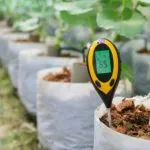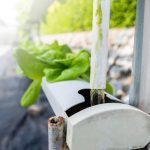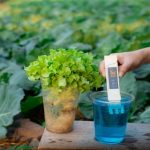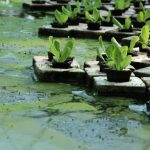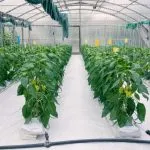Hydroponics is a unique and efficient method to grow plants without soil, but one of the crucial factors that impact the success of this gardening practice is humidity. Maintaining the right humidity levels in your hydroponic system can significantly influence plant growth, prevent issues such as mold and pests, and ultimately lead to a thriving hydroponic garden.
Understanding the role of humidity in hydroponics is essential for any grower, as it contributes to nutrient absorption and transpiration in plants. Ensuring that the humidity for hydroponics is at an optimum range allows your plants to absorb nutrients more effectively and encourages healthy growth. As you embark on your hydroponic journey, get familiar with the ideal temperature and humidity for the types of plants you wish to grow and learn how to control these conditions for maximum efficiency and success.
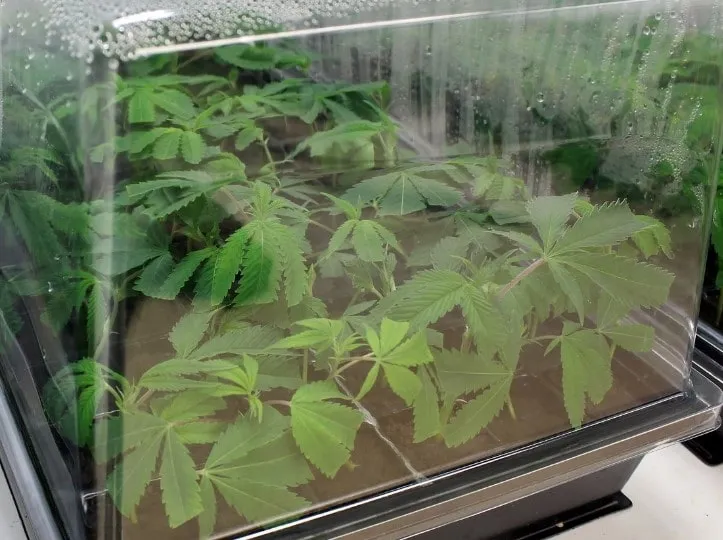
- Understanding Humidity in Hydroponics
- Ideal Temperature and Humidity for Hydroponic Plants
- How To Control Humidity In Hydroponics
- Factors Affecting Humidity and Plant Growth
- Preventing Mold and Pests
- Growing Different Hydroponic Plants
- Common Challenges and Solutions
- Improving Efficiency and Success
- Different Hydroponic Growing Methods
- Frequently Asked Questions
Understanding Humidity in Hydroponics
Role of Humidity in Plant Growth
Humidity plays a vital role in the growth and development of your hydroponic plants. It affects the rate of transpiration, which is the process of water vapor being released from the plants’ leaves. When the humidity levels are properly maintained, your plants can effectively take in nutrients and exchange gases, ensuring healthy growth.
Higher humidity levels in the early stages of growth (around 60-70%) can promote vigorous vegetative growth, while gradually reducing humidity levels towards 40% during the flowering stage can result in the optimal production of flowers and fruits.
Relative Humidity and Vapor Pressure Deficit
Relative humidity (RH) is the amount of water vapor in the air compared to the maximum amount it can hold at the same temperature. RH is expressed as a percentage, with 100% being the air’s saturation point. In hydroponics, the ideal range of relative humidity varies depending on the growth stage of your plants.
Vapor Pressure Deficit (VPD) is another important metric related to humidity. VPD measures the difference between the current air vapor pressure and the saturation vapor pressure at the current temperature. A higher VPD indicates that your plants can transpire more water, driving nutrient uptake and growth. However, excessively high VPD can lead to plant stress and wilting.
To maintain optimal relative humidity levels in your hydroponics system, follow these guidelines:
- Week 1 growth: 60%-70% RH
- Week 2 growth: 60%-70% RH
- Week 1 flower: 55%-65% RH
- Week 2 flower: 50%-60% RH
By keeping a close eye on the relative humidity and vapor pressure deficit, you can ensure that your hydroponic plants thrive under ideal conditions. This not only results in healthier, more robust plants, but also leads to better yield and quality of the final produce.
Ideal Temperature and Humidity for Hydroponic Plants
Ideal Temperature for Different Stages
To ensure healthy growth in your hydroponic plants, it’s essential to maintain the proper air temperature. The ideal temperature range for most hydroponic plants is between 65°F (18°C) and 80°F (27°C). However, different stages of growth require slightly different temperature conditions:
- Germination phase: Maintain a temperature of 68°F (20°C) to 72°F (22°C) to promote seed germination.
- Vegetative phase: Keep the temperature around 72°F (22°C) to 78°F (25°C) while using grow lights for optimal growth.
- Bloom phase: Ensure the temperature stays within 68°F (20°C) to 75°F (24°C) for the best yield during the flowering stage.
Remember to keep the temperature difference between day and night minimal, ideally not exceeding 10°C.
Ideal Humidity Levels for Growth
The best humidity for hydroponics varies with the stage of plant growth and the surrounding temperature. Here’s a general guideline for humidity levels:
- Germination phase: 95% humidity for strong, healthy sprouts.
- Vegetative phase: 60% humidity to support vigorous growth.
- Bloom phase: 45% humidity for an abundant harvest.
Keep in mind that different plants may have slightly different humidity requirements, and the ideal humidity also depends on the temperature:
- Plants kept at 60°F (16°C) thrive in 89% humidity.
- Plants kept at 70°F (21°C) thrive in 91% humidity.
- Plants kept at 80°F (27°C) thrive in 95% humidity.
Use a humidifier or dehumidifier to adjust the humidity levels, and monitor conditions closely.
How To Control Humidity In Hydroponics
Ventilation and Airflow
Proper ventilation is essential for controlling humidity in your hydroponic grow room. A well-set-up ventilation system helps to regulate temperature and humidity levels by venting out hot and humid air while replacing it with fresh air. Make sure to invest in fans for your grow area to prevent humid patches and maintain consistent air circulation. Proper airflow not only helps balance the humidity but also prevents mold and pests that thrive in stagnant air, high humidity, and heat.
Humidifiers and Dehumidifiers
Controlling humidity levels might involve adjusting the moisture in the air with the help of humidifiers and dehumidifiers. In the early stages of plant growth, high humidity levels are necessary. The best way to raise humidity in grow tent is to use a hydroponic humidifier when humidity levels are too low for your plants.
However, as your plants grow and mature, excess humidity can lead to mold and other issues. Want to know how to reduce humidity in a grow tent or room in such cases? You should utilize a dehumidifier to maintain an ideal humidity level. Choosing the right size of the dehumidifier for your grow room is crucial in maintaining a balanced environment.
Temperature Controls
Temperature and humidity are closely related; as the temperature increases, so does the humidity. To effectively control humidity in your hydroponic system, it’s important to maintain appropriate temperature levels. Equip your grow room with heaters and air conditioning units to regulate the temperature. Use a thermostat to monitor and adjust the temperature when necessary.
Remember that different stages of plant growth require different temperature and humidity levels. By ensuring proper ventilation, investing in humidifiers or dehumidifiers according to your plant requirements, and maintaining optimal temperature control, you can create a balanced environment that will not only help your plants thrive, but also prevent issues like mold, pests, and diseases.
Factors Affecting Humidity and Plant Growth
Lighting and Light Intensity
When it comes to humidity in hydroponics, the lighting and light intensity play a crucial role. Brighter lights tend to produce more heat, which can increase the amount of water vapor in the air. To better control the humidity, you might need to adjust the intensity or type of your grow lights. For instance, you can switch to LED lights, which emit less heat and help maintain a stable humidity level.
Additionally, make sure you properly space out your grow lights to avoid creating hotspots in your hydroponic system. Doing so also helps achieve equal light distribution and ensures optimal plant growth.
Water Temperature and Nutrient Solution
Another critical factor affecting humidity is the water temperature of the nutrient solution in your hydroponic system. Warmer water encourages higher rates of evaporation, leading to increased humidity levels. To maintain a balanced humidity level, regularly monitor and adjust your water temperature accordingly. Generally, a water temperature maintained between 65-75°F is ideal for hydroponic systems.
The nutrient solution also affects how much water is available for evaporation and, consequently, the humidity. Ensure that your nutrient solution is well-balanced to support plant growth while maintaining an optimal humidity level in your grow room.
Carbon Dioxide Levels
Finally, the carbon dioxide (CO2) levels in your hydroponic system are crucial to plant growth and indirectly affect humidity. Higher concentrations of CO2 result in more efficient photosynthesis, allowing for increased moisture uptake by plants. This increased moisture uptake can lead to a decrease in overall humidity levels within your controlled environment.
However, be cautious not to let the CO2 levels go too high, as this might negatively impact plant growth. Aim for CO2 levels in the range of 1,000 to 1,500 parts per million (ppm) for best results.
By closely monitoring and managing these factors – lighting, water temperature, nutrient solution, and carbon dioxide levels – you can better control the humidity in your hydroponic system, ultimately leading to healthier and more productive plants.
Preventing Mold and Pests
Minimize Mold Growth
To minimize mold growth in your hydroponic system, it’s essential to maintain proper humidity levels. Keep in mind that ideal humidity levels depend on your specific crop. To identify the current humidity levels in your hydroponic setup, consider using a hygrometer. Ensuring adequate ventilation is also crucial in preventing mold and mildew formation. Fresh, cool air circulating over and under your plants can reduce mold and pest risks, as well as promote stronger stem growth.
Additionally, promptly prune or clean infected areas as soon as you notice any signs of mold or mildew. This quick response can help prevent the issue from spreading to other plants in your system.
Control Dust and Pollutants
Controlling dust and pollutants in your hydroponic environment is a vital step in reducing the risk of mold and pests. Here are some suggestions that can help:
- Clean Regularly: Regularly clean your hydroponic system, equipment, and growing area to minimize the buildup of dust and debris that can attract pests or provide a breeding ground for mold spores.
- Use quality air filters: Invest in high-quality air filters for your ventilation system to remove any airborne dust, pollen, and mold spores before they enter your grow area.
- Keep plants healthy: Healthy plants are less susceptible to mold and pests. Ensure that your hydroponic plants receive the proper nutrients, light, and care they need to thrive.
- Monitor water quality: Regularly check and maintain the water quality in your hydroponic system. Poor water quality can lead to the growth of algae, mold, and mildew, which can compromise your plants’ health.
By vigilantly following these steps, you can effectively prevent mold and pests in your hydroponic system, leading to healthier and more abundant crops.
Related: One of the first signs of poor water quality is the growth of algae. Find out how to control algae in hydroponics by controlling various factors like humidity.
Growing Different Hydroponic Plants
Growing a variety of hydroponic plants can be a rewarding experience as long as you understand how to properly control the humidity and environment for each type of plant. In this section, we’ll discuss specific humidity and environment requirements for various plants, focusing on tomatoes, peppers, cucumbers, lettuce, spinach, and broccoli.
Tomatoes, Peppers, and Cucumbers
When growing tomatoes, peppers, and cucumbers hydroponically, for the first two weeks, you should maintain humidity levels of around 60-70%. As the plants reach the flowering stage, reduce the humidity to 55-65% during the first week, followed by 50-60% during the second week of flowering.
Temperature range: 65-80°F (18-27°C)
Consider the following tips for maintaining optimal humidity for these plants:
- Use a dehumidifier to control humidity levels.
- Monitor the temperature and humidity with a hygrometer and thermometer.
- Ensure adequate airflow by using fans or air vents.
Lettuce, Spinach, and Broccoli
When cultivating hydroponic lettuce, spinach, and broccoli, your primary focus should be on ensuring consistent humidity levels. Here are some general guidelines for maintaining the appropriate humidity levels for these leafy greens:
- Lettuce: 40-70% humidity
- Spinach: 50-70% humidity
- Broccoli: 45-70% humidity
Temperature range: 60-75°F (15-24°C)
Keep in mind the following pointers while growing these plants:
- Use a humidifier to increase humidity levels if necessary.
- Monitor the growing environment regularly.
- Ventilation is key to preventing diseases and maintaining proper humidity levels.
Common Challenges and Solutions
Root Rot and Wilted Plants
Dealing with root rot and wilted plants in hydroponics can be challenging. One common cause of these issues is poor water quality, such as excess heat or imbalanced pH. To prevent this, monitor your nutrient solution’s pH levels at least once or twice per week, and adjust as needed. Also, ensure that your water temperature is kept between 68 and 72 degrees Fahrenheit to maintain a healthy environment for the roots.
Another cause of root rot might be a lack of oxygen in the water. Invest in an air pump to pump oxygen into your system, which will help your plants’ roots to breathe properly. If you still experience root rot issues, it could be due to a pathogen. In this case, consider using a biological control agent to combat the issue.
Bud Rot and Drying Issues
Bud rot and drying issues can be frustrating when growing in a hydroponic system. Humidity plays a large role in these problems.
To combat drying issues:
- Maintain proper humidity levels based on your plants’ specific needs. For instance, plants kept at 50 degrees Fahrenheit thrive in 83% humidity, while plants at 60 degrees Fahrenheit thrive in 89% humidity.
- Utilize a humidifier to increase humidity levels if necessary.
- Manage air circulation by adjusting fans, which can help with managing condensation and preventing bud rot.
In the case of bud rot, it’s also important to maintain proper airflow and spacing between plants. Overcrowding can lead to poor circulation and increase the risk of bud rot.
Improving Efficiency and Success
Monitoring Tools

To ensure efficiency and success in your hydroponic system, it’s essential to monitor and maintain appropriate humidity levels. One tool you can use is a hygrometer, which measures the humidity in your grow area. By regularly checking your hygrometer, you can keep track of the humidity levels and make adjustments as needed. Another useful tool is a thermostat that helps in monitoring and regulating temperature and can be connected to heaters or chillers for automatic adjustments.
Grow Tents and Controlled Environments
Grow tents provide a closed, controlled environment that can offer many benefits for your hydroponic system. They allow you to:
- Control the light cycles and light intensity, leading to better growth rates and higher yields.
- Isolate your plants from external weather conditions, pests, and diseases, enabling you to maintain optimal growing conditions.
To manage humidity in a grow tent, consider installing an exhaust fan and a ventilation system. Exhaust fans help to remove excess moisture and maintain proper air circulation. A ventilation system contributes to temperature regulation and prevents the buildup of stale air.
It’s important to choose a grow tent size that corresponds with your plants’ humidity requirements, as this can help prevent extreme fluctuations in humidity levels. By creating an ideal controlled environment within the grow tent, you’ll maximize the efficiency and success of your hydroponic system.
Different Hydroponic Growing Methods
Deep Water Culture and Nutrient Film Technique
In water culture systems, your plants are suspended directly in a nutrient-rich solution. This method is often used for growing herbs and leafy greens like lettuce. It’s a cost-effective and straightforward choice for beginners. However, the downside is the relatively low oxygen supply to the root zone compared to other hydroponic systems.
The Nutrient Film Technique (NFT) is slightly more advanced, with plants supported by channels, where a shallow stream of nutrient solution flows. The roots are exposed directly to the water and nutrients, which constantly circulates. To maintain an appropriate humidity level, monitor and adjust your nutrient solution’s flow rate and temperature.
Aeroponics and Drip Systems
Aeroponics systems are more sophisticated, using mist or fine water droplets to deliver both nutrients and oxygen to the roots. This method increases the rate of oxygen absorption, which can promote faster plant growth – an excellent choice for high-value crops like tomatoes and strawberries. Humidity in aeroponics can be managed by adjusting the frequency and duration of the misting or spraying cycles.
Drip systems involve delivering the nutrient solution through a network of tubes and emitters, slowly and directly to the root zone. This method allows you to customize nutrient delivery, helping you achieve optimal humidity levels. The key is to pay attention to the rate of water delivery, timing, and even the design of the emitter. Scheduling and drip rate adjustments can play a significant role in managing humidity in your hydroponic garden.
Remember, it’s essential to monitor and maintain ideal humidity levels based on your chosen crops. Whether you’re growing using water culture, Nutrient Film Technique, aeroponics, or drip systems – understanding your system’s nuances will help you make adjustments and keep your plants thriving.

